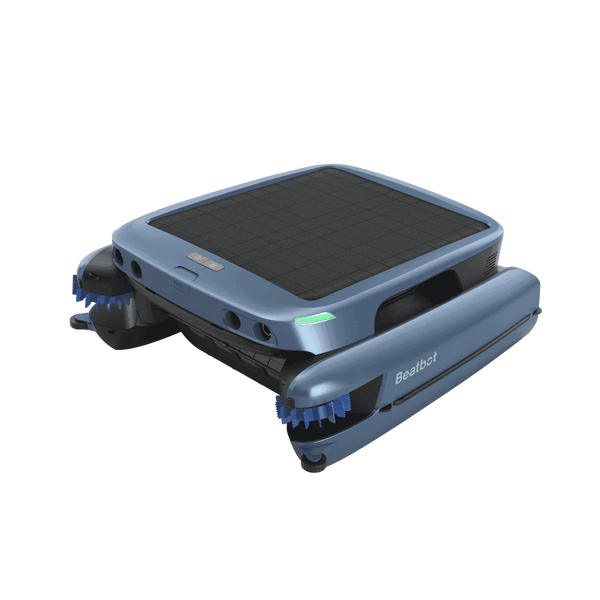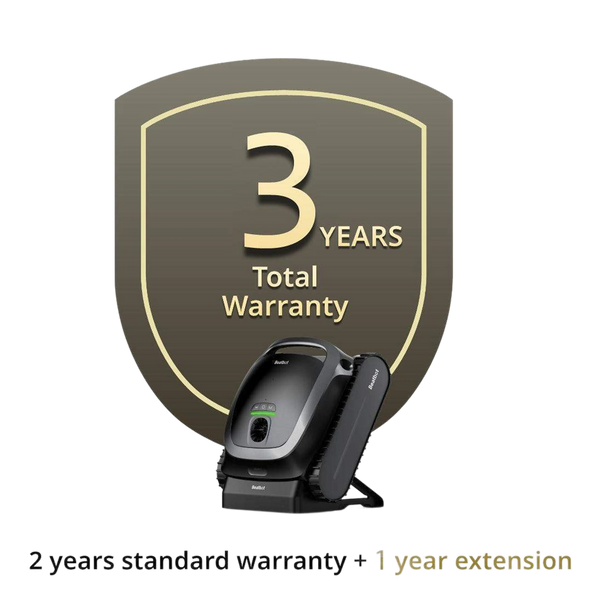How to Get Rid of Algae in Your Pool With Robotic Pool Cleaners
Algae spores are consistently brought into the pool water by wind, rain, and contaminated pool maintenance equipment or swimwear. The ideal conditions for algae growth include warm temperatures, sunlight, unbalanced pool chemicals, and still water. When these factors come together, they provide the perfect environment for algae to thrive, leading to rapid spread if not promptly addressed. Algae not only affect the aesthetics of your pool by turning the water green, murky, and unwelcoming, but it can also create slippery surfaces, posing safety hazards. Furthermore, algae can obstruct filtration systems, causing inadequate water circulation and filtration, further degrading water quality. Effective algae control is essential for sustaining a safe swimming environment and keeping your pool clean and inviting.
Table of content
The Importance of Robotic Pool Cleaners Removing Algae
Robotic pool cleaners are crucial in combatting algae, utilizing cutting-edge technology to deliver thorough cleaning. These automated cleaners have advanced algorithms that efficiently cover the entire floor, walls, corners and waterline where algae commonly build up. For the most advanced technology, like Beatbot AquaSense Pro robotic cleaners, they can even remove debris on the surface of the water quickly.
Choosing An Appropriate Robotic Pool Cleaner to Remove Algae
When addressing algae issues, seek a robotic pool cleaner with decisive brush action, exceptional filtration capabilities to trap tiny algae spores, and the capacity to access all parts of your pool, including walls and waterline. Users can select their preferred cleaning modes to maintain pool cleanliness, which is crucial for preventing algae buildup. Additionally, some high-end products like Beatbot are equipped with ECO mode if selection.

Instruction of Using a Robotic Cleaner Step-by-Step to Clean Your Pool
Step 1. Preparing Through Debris Removal and Chemical Balancing
Start by manually eliminating large debris: large leaves or twigs to facilitate the robotic cleaner's operation. Test your pool water and align the chemical levels to achieve the recommended balance.
Step 2. Configuring the Robotic Cleaner
Carefully lower your robotic pool vacuum into the water, ensuring full submersion before activation to prevent the formation of air pockets that could impede its performance. Confirm that the cleaner is correctly connected to a power source or fully charged, depending on its operational design, to ensure an uninterrupted, complete cleaning cycle.
Step 3. Choosing and Initiating the Cleaning Cycle
Select a suitable cleaning cycle based on your pool's current condition. While the cleaner is in operation, it's advisable to periodically monitor its progress to ensure comprehensive coverage of all pool areas and consistent performance.
Step 4. After-Cleaning Maintenance and Storage
Upon completing the cleaning cycle, retrieve the robotic vacuum from the pool. Thoroughly cleanse and rinse its filter basket or bag to eliminate any trapped debris and algae spores. Subsequently, permit the cleaner to dry in a shaded area before storing it in a suitable location with controlled temperature and away from direct sunlight, extending its lifespan and preserving optimal functionality.
Strategies for Algae Prevention in Your Pool
Consistent usage of a robotic pool cleaner can effectively diminish the probability of algae proliferation. Furthermore, upholding proper chemical equilibrium, ensuring sufficient water flow, and conducting periodic shock treatments will foster an environment less conducive to algae growth. Alongside regular robotic pool cleaner maintenance, optimizing your pool's water circulation through strategically positioning return jets can deter algae development. Integrating algaecides into your routine pool upkeep and regular adjustments to the pool's chemical balance, particularly after heavy rainfall or prolonged sunny conditions, are advised. Common shock treatments can also aid in eradicating emerging algae spores before they become visible issues.
Frequently Asked Questions About Algae Removal With Robotic Cleaners
Can the Robotic Pool Cleaner effectively remove various types of algae from the pool?
That's for sure; most robotic pool cleaners are OK with handling various types of algae, although severe infestations may require initial manual scrubbing.
How much additional electricity consumption can be expected when using a Robotic Pool Cleaner?
The additional electricity consumption varies by model, but robotic pool cleaners are generally designed to be energy efficient. Some advanced products like Beatbot are designed with many different modes, such as Eco mode, saving energy a lot.
What maintenance and upkeep tasks are required for the Robotic Pool Cleaner?
Regular maintenance tasks include cleaning the filter, brushes, and tracks and ensuring proper storage when not in use.
What is the proper procedure for restarting the Robotic Pool Cleaner for cleaning after prolonged pool inactivity?
Refer to the manufacturer's guidelines for specific instructions on restarting the cleaner after a prolonged inactive period.
Are Robotic Pool Cleaners suitable for pools of different shapes and sizes?
Yes, many models are designed to work effectively in pools of various shapes and sizes, offering versatility in their applications. It is even intended to connect with the APP for some of the most advanced products like Beatbot AquaSense Pro.
Relative Blogs
About the author



















